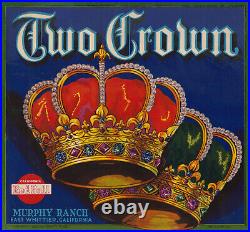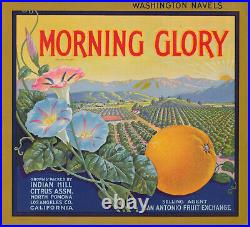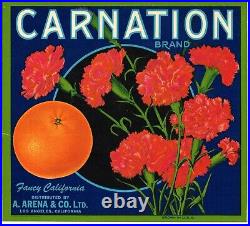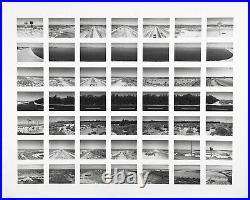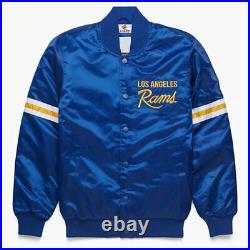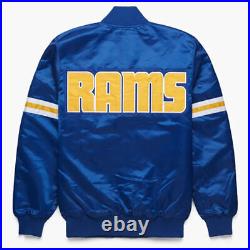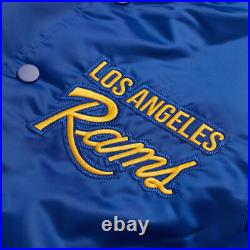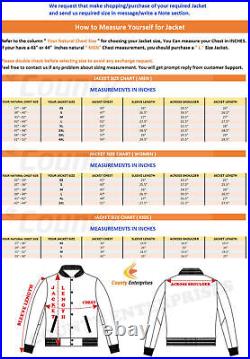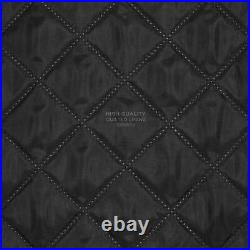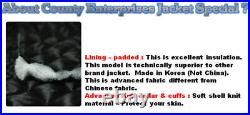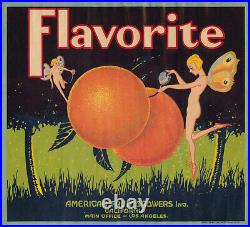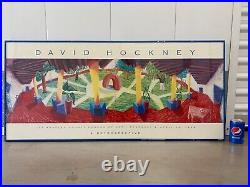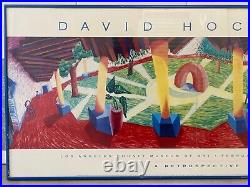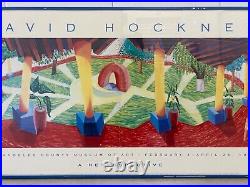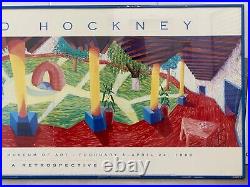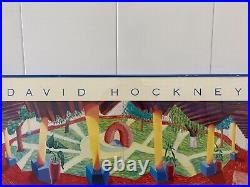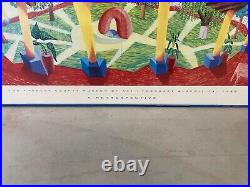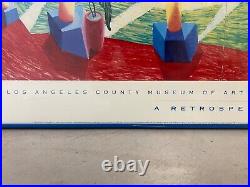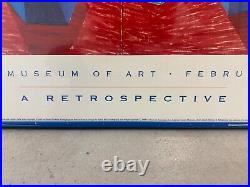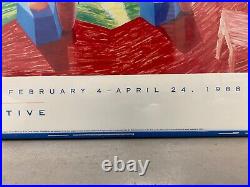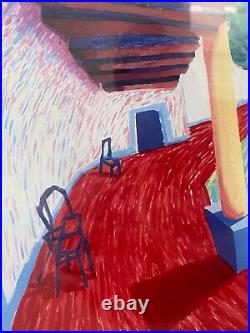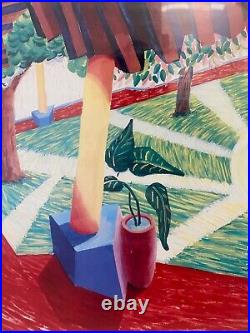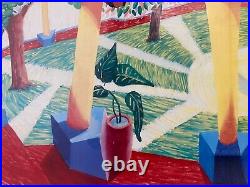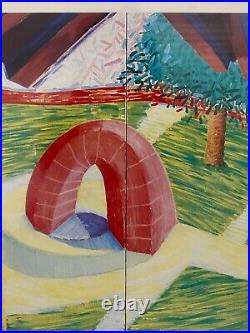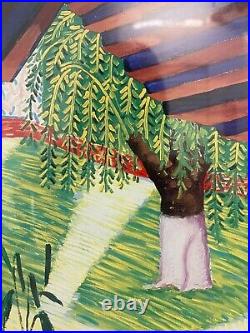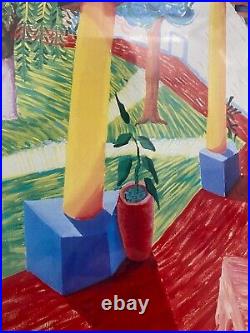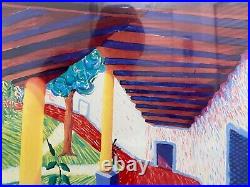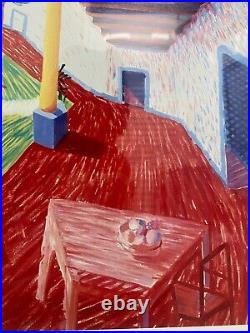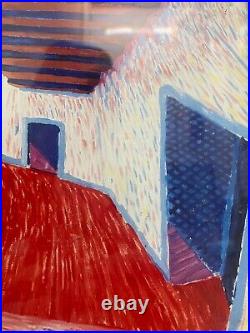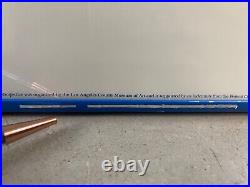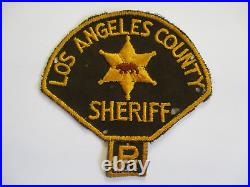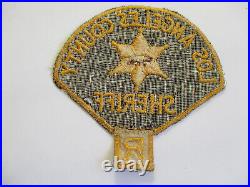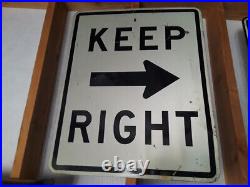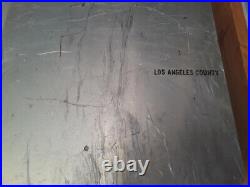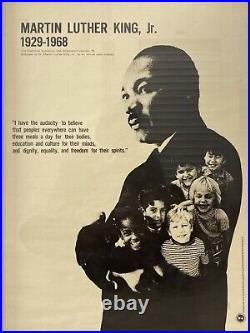
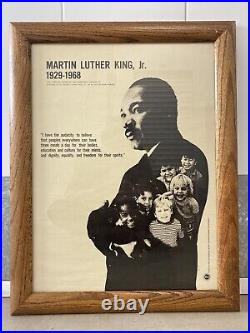
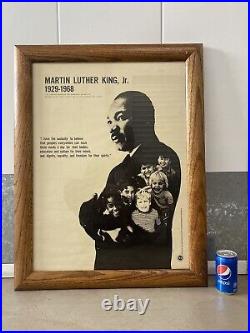

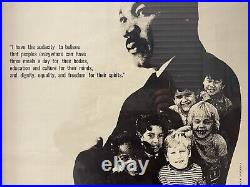
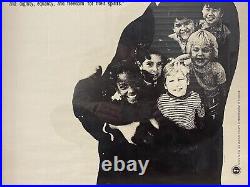
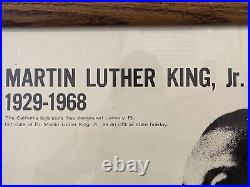
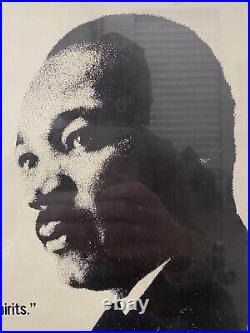
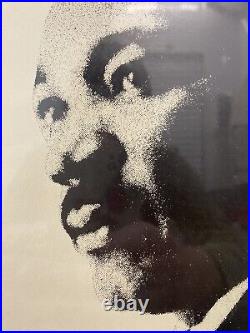
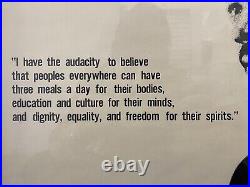
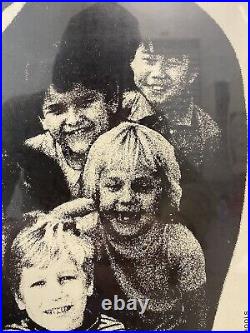
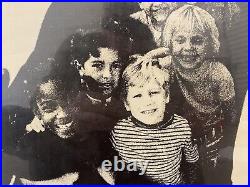
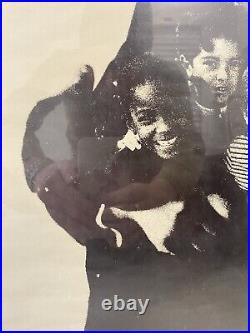
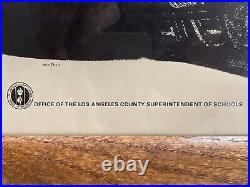
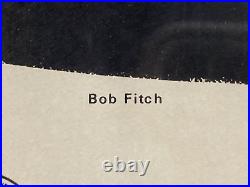
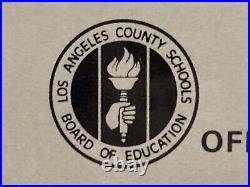
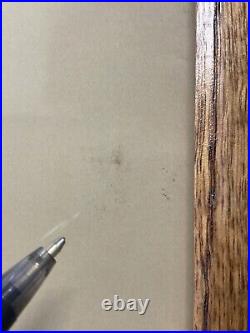

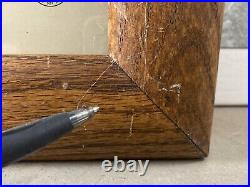


This is a significant and RARE Historic Vintage Martin Luther King Jr. Day Poster, created in the early 1980’s to honor the recognition of Martin Luther King Jr. Day as a holiday in the State of California. Governor Jerry Brown signed this holiday into State Law in California on September 3rd, 1981. This piece was produced by the Los Angeles County Schools Board of Education, utilizing an original photograph of Dr. King by acclaimed American Civil Rights photographer and activist, Bob Fitch 1939 – 2016. King is represented in a stoic and contemplative stance, with several small children of various racial ethnicities and cultural backgrounds in his arms. This poster reads: Martin Luther King, Jr. The California legislature has designated January 15, birthdate of Dr. Martin Luther King, Jr. As an official State holiday… I have the audacity to believe that peoples everywhere can have three meals a day for their bodies, education and culture for their minds, and dignity, equality, and freedom for their spirits. ” Additionally, this piece is typographically signed: “Bob Fitch” at the lower right edge and reads: “Office of the Los Angeles County Superintendent of Schools, ” and bears a small seal which reads: “Los Angeles County Schools Board of Education. Approximately 21 1/2 x 27 1/2 inches including frame. Actual artwork is approximately 18 x 24 inches. Very good condition for age, with some light creasing and speckles of soiling under the glass, and mild scratches and edge wear to the vintage wooden frame. This historic poster is exceedingly scarce, as I cannot find another example anywhere, after scouring the Internet extensively. This piece would be an important addition to any museum archival collection, American Civil Rights memorabilia collection, or a collector of Bob Fitch’s impressive photographic work. Acquired in Los Angeles County, California. If you like what you see, I encourage you to make an Offer. Please check out my other listings for more wonderful and unique artworks! (January 15, 1929-April 4, 1968) was born Michael Luther King, Jr. But later had his name changed to Martin. His grandfather began the family’s long tenure as pastors of the Ebenezer Baptist Church in Atlanta, serving from 1914 to 1931; his father has served from then until the present, and from 1960 until his death Martin Luther acted as co-pastor. Martin Luther attended segregated public schools in Georgia, graduating from high school at the age of fifteen; he received the B. Degree in 1948 from Morehouse College, a distinguished Negro institution of Atlanta from which both his father and grandfather had graduated. After three years of theological study at Crozer Theological Seminary in Pennsylvania where he was elected president of a predominantly white senior class, he was awarded the B. With a fellowship won at Crozer, he enrolled in graduate studies at Boston University, completing his residence for the doctorate in 1953 and receiving the degree in 1955. In Boston he met and married Coretta Scott, a young woman of uncommon intellectual and artistic attainments. Two sons and two daughters were born into the family. In 1954, Martin Luther King became pastor of the Dexter Avenue Baptist Church in Montgomery, Alabama. Always a strong worker for civil rights for members of his race, King was, by this time, a member of the executive committee of the National Association for the Advancement of Colored People, the leading organization of its kind in the nation. He was ready, then, early in December, 1955, to accept the leadership of the first great Negro nonviolent demonstration of contemporary times in the United States, the bus boycott described by Gunnar Jahn in his presentation speech in honor of the laureate. The boycott lasted 382 days. On December 21, 1956, after the Supreme Court of the United States had declared unconstitutional the laws requiring segregation on buses, Negroes and whites rode the buses as equals. During these days of boycott, King was arrested, his home was bombed, he was subjected to personal abuse, but at the same time he emerged as a Negro leader of the first rank. In 1957 he was elected president of the Southern Christian Leadership Conference, an organization formed to provide new leadership for the now burgeoning civil rights movement. The ideals for this organization he took from Christianity; its operational techniques from Gandhi. In the eleven-year period between 1957 and 1968, King traveled over six million miles and spoke over twenty-five hundred times, appearing wherever there was injustice, protest, and action; and meanwhile he wrote five books as well as numerous articles. In these years, he led a massive protest in Birmingham, Alabama, that caught the attention of the entire world, providing what he called a coalition of conscience. And inspiring his “Letter from a Birmingham Jail”, a manifesto of the Negro revolution; he planned the drives in Alabama for the registration of Negroes as voters; he directed the peaceful march on Washington, D. Of 250,000 people to whom he delivered his address, “l Have a Dream”, he conferred with President John F. Kennedy and campaigned for President Lyndon B. Johnson; he was arrested upwards of twenty times and assaulted at least four times; he was awarded five honorary degrees; was named Man of the Year by Time magazine in 1963; and became not only the symbolic leader of American blacks but also a world figure. At the age of thirty-five, Martin Luther King, Jr. Was the youngest man to have received the Nobel Peace Prize. On the evening of April 4, 1968, while standing on the balcony of his motel room in Memphis, Tennessee, where he was to lead a protest march in sympathy with striking garbage workers of that city, he was assassinated. Robert De Witt Fitch. Robert De Witt Fitch was born on July 20, 1939, in Los Angeles. His parents were Robert Fitch and Marion Weeks De Witt. His father was a minister with the United Church of Christ. And professor of Christian ethics. Fitch went to high school in Berkeley. In 1961, Fitch earned a B. At Lewis & Clark College. Fitch later earned both a B. And a Master of Divinity. At the Pacific School of Religion. His father was dean. Of the Pacific School of Religion. In 1965, Fitch was ordained. By the United Church of Christ. Early in his career, Fitch served as an intern at Glide Memorial United Methodist Church. There he worked with groups including street gangs, the homeless, hippies and LGBT. Fitch was later a labor organizer. And a draft resistance. Fitch worked at the California. Department of Housing and Community Development. And at the Resource Center for Nonviolence. Fitch died on April 29, 2016, in Watsonville, California. He was aged 76 and died from complications of Parkinson’s disease. An archive of Fitch’s photos is held at Stanford University Libraries. The archive is described as containing over 200,000 images, primarily black and white photographs and negatives, spanning the period from 1965 to the present. From Watsonville, California, the activist photographer Bob Fitch was best known for his work that captured iconic images of major figures of movements for civil rights, peace and social justice, such as Dr. Bob Fitch has written: My life has been immeasurably enriched by the people whose lives I have been privileged to document, especially the workers and leaders of this nation’s non-violent campaigns for peace & justice. Bob Fitch: Leading Social Movement Photojournalist. Bob Fitch was a leading social movement photojournalist. His photographs were used to promote civil rights, labor rights, and war resistance movements. Bob Fitch devoted his life to community organizing for multiracial democracy after reading James Baldwin’s The Fire Next Time. Bob Fitch worked and lived at the Resource Center for Nonviolence from 1999 to 2006, and lived in Watsonville from 2006 until his death in 2016. In 1965 Fitch was invited by Hosea Williams to be a staff photographer for the Southern Christian Leadership Conference (SCLC) during the civil rights movement. “I was told, Bob, we can’t send African-American journalists and photographers into the field’cause they’ll get beat up and killed,'” Fitch recalled in an interview; Every week you’ll come back with a news story in print and photos, and you’ll send them to the major Black print media around the nation. Fitch photographed voter registration, voting, and recruitment and training for African-American political candidates during the first election following the passage of the Voting Rights Act in 1965. He documented everyday lives of African-Americans, and marches, demonstrations, meetings during SCLC’s organizing efforts in Chicago, People-to-People tours in Alabama, the Meredith Mississippi March Against Fear, and the Citizenship Education Program in Alabama by Septima Clark and Dorothy Cotton. Clayborne Carson, Stanford University movement historian, recalled that Fitch was so trusted even in unguarded moments that he was the only white person present at an emotional meeting among Dr. King, Stokely Carmichael and other civil rights figures in Greenwood, Miss. In 1966, the night before Mr. Carmichael recast the movement by invoking the slogan Black Power. Summoned to Atlanta in 1968 by Dr. King’s widow, Coretta Scott King, to cover her husband’s funeral, Mr. Fitch debated whether to photograph the open coffin. It was a tough decision to take that photo. It felt like blasphemy to put a camera in his face. But then I thought,’The world needs to see this horrible truth. After the assassination of Dr. Martin Luther King, Fitch decided to document other movements making history. He photographed Cesar Chavez, Dolores Huerta, farm workers striking in fields, and the founding convention of the United Farm Workers Union. Fitch photographed Dorothy Day of the Catholic Workers movement, Catholic war resisters Daniel Berrigan and Philip Berrigan, activist singer Joan Baez, draft resister David Harris, Black Member of Congress Ron Dellums and Pajaro Valley political leader Luis Alejo. His work is presented in. My Eyes Have Seen. 1971, Richard Steven Street’s. Photographing Farmworkers in California. This Light of Ours: Activist Photographers of the Civil Rights Movement. During his tenure at RCNV, Bob continued his photojournalism by documenting local peace & justice actions and projects in Vietnam (Friendship Village), Brazil (alcohol fuel), Sri Lanka (International Peaceforce), Palestine, Watsonville, UCSC, and the 2006 Guerrero Azteca Tijuana-to-San Francisco march with Fernando Suarez del Solar, Camilo Mejia and Pablo Paredes. In his photography he emphasized the role of the rank and file as agents for social change and he was propelled by a desire to not just observe movements but to be deeply involved in them. He set up RCNV’s website, streamlined and perfected RCNV’s outreach and media connections. Bob lived upstairs at the Resource Center’s Broadway house for several years and served as the unofficial on-site host and chief mischief maker. He was a mentor to countless young people. He had an organizing principle for young activists who sought RCNV support: bring 4 people committed to working for your organizing goal for at least a year, and we will support you. He was active in RCNV’s GI Rights Hotline, counseling troops and young people about alternatives to the military. He was instrumental in bringing the Santa Cruz City Schools Opt-In program to high schools, so that students had to request to be contacted by military recruiters instead of school districts giving student contact information to recruiters. This program was replicated nationwide. Bob played a lead role for RCNV in organizing efforts including the Santa Cruz Living Wage Coalition; the Million Mom March; the Santa Cruz Peace Coalition responding to the 1992 Iraq war, and events featuring Black Member of Congress Ron Dellums and his successor, Barbara Lee. The Bob Fitch Photography Archive is curated by Stanford Libraries Archive and is accessible to all of us. The archive contains over 200,000 images, primarily black and white photographs and negatives, spanning the period from 1965 to 2012. Bob Fitch insisted that as a condition of Stanford receiving the images, people and nonprofit organizations may download high quality image files and reproduce his photos for free. Go online to the Stanford Libraries Bob Fitch Photography Archive. In 1966, a white civil rights worker was thrown in jail in a rural Alabama town. To his surprise and enlightenment, he was bailed out by local citizens – three African-American families used their farms as security for his bail! That worker was me. Those committed and generous farm families, and other working families like them, are my heroes, my role models. The farmers and their families were not Civil Rights movement all-stars. They were not featured and profiled in the daily papers and on TV. Nevertheless, they were the source and sustenance of the Black Civil Rights movement. Successful organizing requires shrewd tacticians, articulate spokes-people and focused workers. But I also know from study and experience that successful social struggle requires the participation and support of the people who live that struggle in their daily learning, job, family and community. Trained to be a Protestant minister. Career as a photojournalist began in 1965 when he joined the Rev. Martin Luther King Jr. S organization, The Southern Christian Leadership Conference, as a staff photographer. As Fitch notes, I worked for two intense years as the volunteer photographer for Dr. King and the SCLC, crisscrossing “Black Belt” states to document his people-to-people speaking tours promoting get-out-the-vote campaigns. Fitch’s work with the SCLC in 1965 and 1966 produced powerful images of Dr. King’s speaking and leadership, as well as of the courageous efforts of marchers in events such as the 1966 Meredith March Against Fear.



